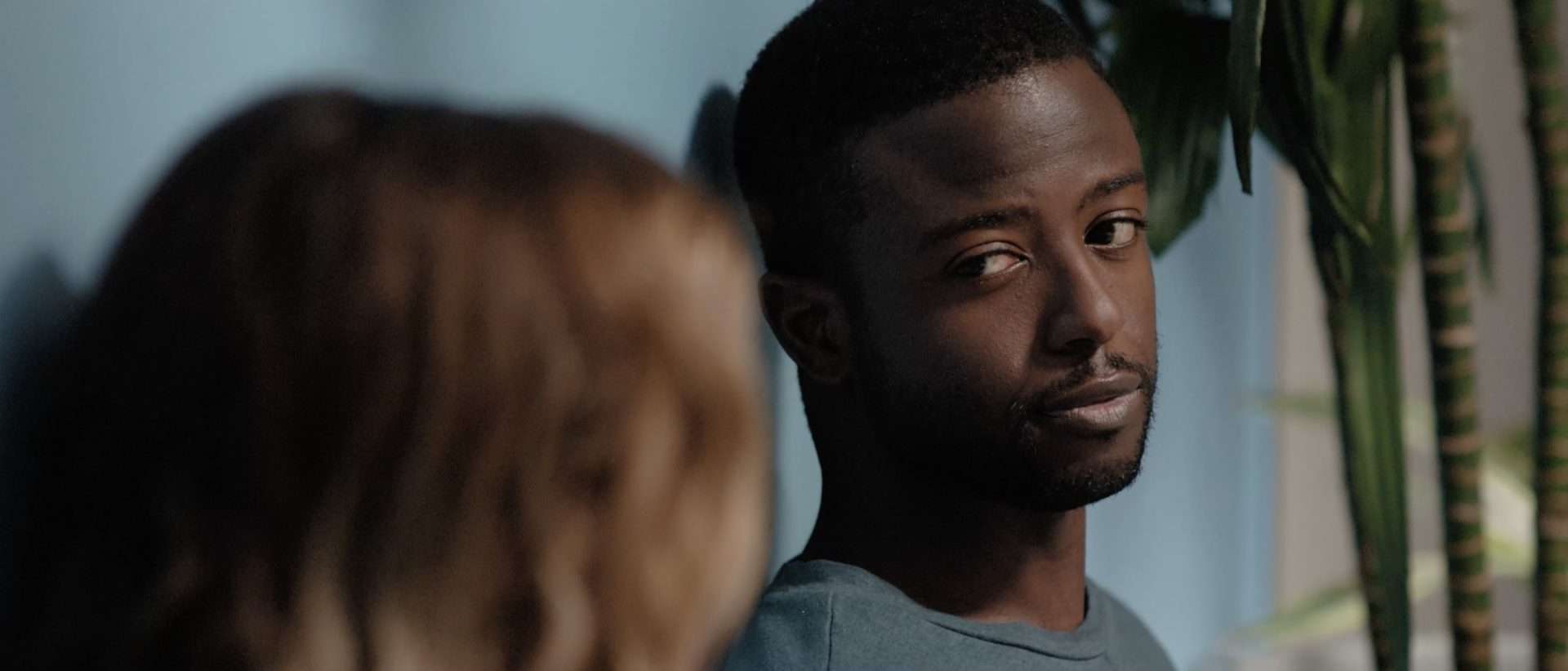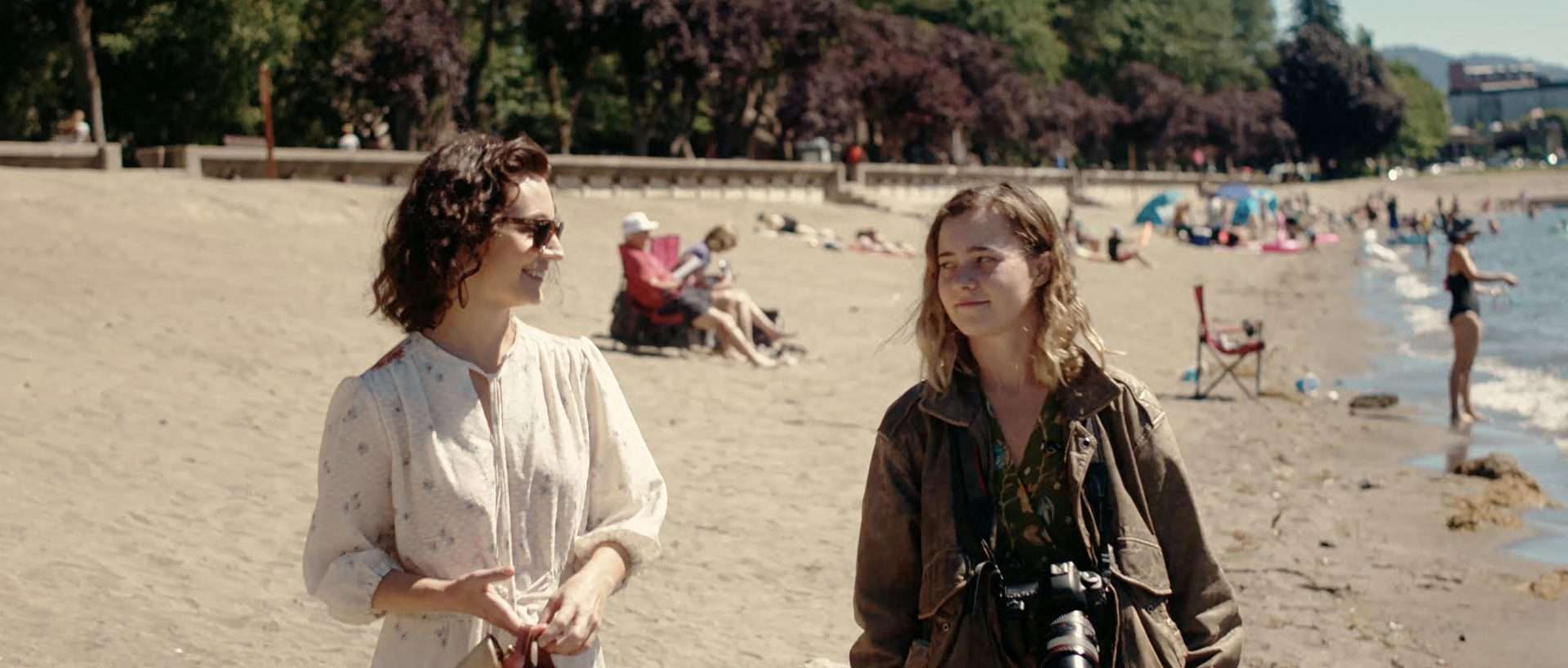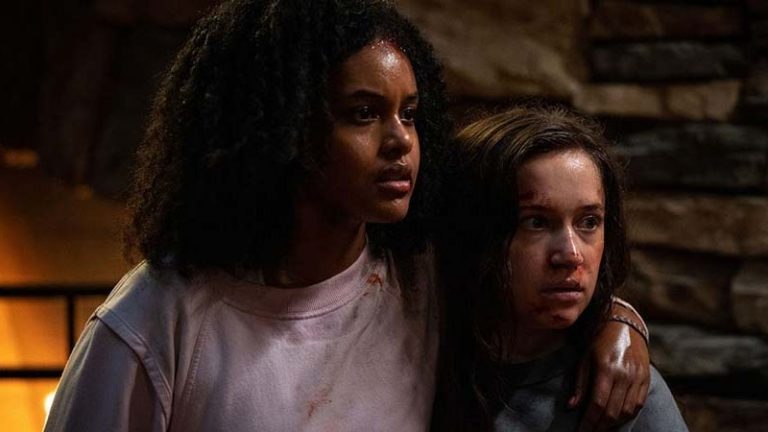Beverly Olevin’s “Good Side of Bad” (2024) is a brisk, moving read; the ease with which the author etches vivid portraits of her characters in stark contradiction with their messy complexity. The tangled lives of the central family situate mental health front and center, with Olevin tackling the subject head-on, but never without sincere compassion. Alethea Root’s interpretation of Olevin’s work is astoundingly raw and intimate, as her “Good Side of Bad” plunges deep into the heart of pain, loss, and the bittersweet pull of familial bonds.
A young photographer, Florence (Lexi Simonsen), is seen running across a bridge, terrified for her life. Seemingly in response to evading her offscreen pursuers, she jumps into the water, which lands her in the hospital. Older sister, Sara (Jules Bruff) drops everything to be there for Florence, who insists that hooded men were hounding her for unknown reasons. A psychological evaluation suggests that Florence might have had an episode in response to deep-rooted trauma, which understandably distresses Sara and their sibling, Peter (Alex Quijano). While Sara’s response to her sister’s condition is more immediate, Peter, who has somewhat distanced himself from everyone, seems a tad dismissive despite being concerned.

Most trauma-fueled mental health crises can be traced back to our childhoods, shaping our perception of the world and how safe we feel in the presence of loved ones. In Florence’s case, she was brought up by her sister in the discontinuous presence of their mother, Mary Ellen (Tess Harper), a neglectful alcoholic currently battling dementia. With Sara taking on the role of a mother figure, Florence obviously associates warmth and safety with her, especially when she’s at her most vulnerable. After being kicked out by her roommate, Florence stays with Sara, who finds it increasingly difficult to navigate her younger sister’s resistance to receiving treatment.
Depiction of mental illness on film can take on varying shades. While some stories explore the complex position of caregivers supporting a loved one, others hone their focus on the person dealing with a mental health condition or crisis. How these perspectives are fleshed out is shaped by intent and genre expectations, but these depictions often take on a shallow or tactless tint when not dealt with care or sensitivity. These concerns do not apply to “Good Side of Bad,” as the film underlines the lives of Florence and her caregivers with equal emphasis, taking an honest, uncompromising approach to the situation without ever demonizing or mystifying mental health. These waters are tough to wade through, and bonds with loved ones are always less than perfect, but unconditional sincerity can go a long way when it comes to gently cradling someone who has lost the will to go on.
After being diagnosed with schizophrenia, Florence is admitted into a mental health facility, where a beautiful bond is formed with fellow patient Dennis (Myles Grier), a gentle, soft-spoken young man with PTSD. The environment inside the facility is depicted with great nuance: the daily group sessions, although helpful for the patients, evoke complex emotions within Florence, who doesn’t want to share too much of herself with medical professionals. There’s also the double-edged sword of being on medication, which suppresses symptoms but leaves you numb, further exacerbating an escalating sense of isolation. Dennis and Florence become each others’ anchor during this tough time, but a tragic incident prompts Sara to bring Florence home and take care of her to the best of her abilities.

Recovery is not a straight path and Florence resists attempts to get better, which is an all-too-human impulse outside of her control, as living with schizophrenia can often feel unbearable. Sara and Peter struggle too, as they’re not always sure what is best for their sister, and have their own isolation and pain to deal with alongside everyday mundanity. While Sara calms herself with baking, Peter seems to have inherited his mother’s alcoholism, dealing with the unspoken turmoil in the only ways he feels attuned to. Good intentions do not always help us coast through difficult times: a personal tragedy makes it even more painful for the siblings to navigate hurt and fragility, even though it pulls them closer to one another than ever before.
Every performance in Root’s film is commendable, but Simonsen is especially brilliant as Florence, who balances intense vulnerability with her innate fierceness as a free-spirited young girl. Bruff is wonderful as always, playing Sara as the doting older sister who gives a lot of herself to the point of self-effacement, while Quijano is delightful and understated as the once-aloof brother who wants to be more involved. “Good Side of Bad” might not be flawless, especially when it comes to pacing and how the acts are structured, but the beating heart of Root’s feature rings loud and true, its conviction refusing to be dimmed.



![Scattered Night [2019] Review: JIFF – An Intricate and Intimate drama](https://79468c92.delivery.rocketcdn.me/wp-content/uploads/2019/05/Scattered-Night-2019-High-On-Films-768x425.jpg)

![The Kid Detective [2020] Review – Sleuthing in a Notably Darker and Self-Aware World](https://79468c92.delivery.rocketcdn.me/wp-content/uploads/2021/02/The-Kid-Detective-2020-768x512.jpeg)
![In Front Of Your Face [2021]: ‘Cannes’ Review – Hong’s latest is Slight in spirit but Deeply Intimate in Form](https://79468c92.delivery.rocketcdn.me/wp-content/uploads/2021/08/In-Front-of-Your-Face-2-768x405.jpg)
![Goodbye Dragon Inn [2003] Review – A Meditative Poem on Cinema and a Type of Cinematic Experience](https://79468c92.delivery.rocketcdn.me/wp-content/uploads/2017/05/GDI-cover-768x520.jpg)
![Zero to Hero [2021]: ‘NYAFF’ review – A compassionate look at the Life of a Paralympic champion](https://79468c92.delivery.rocketcdn.me/wp-content/uploads/2021/08/Zero-to-hero-768x432.jpeg)